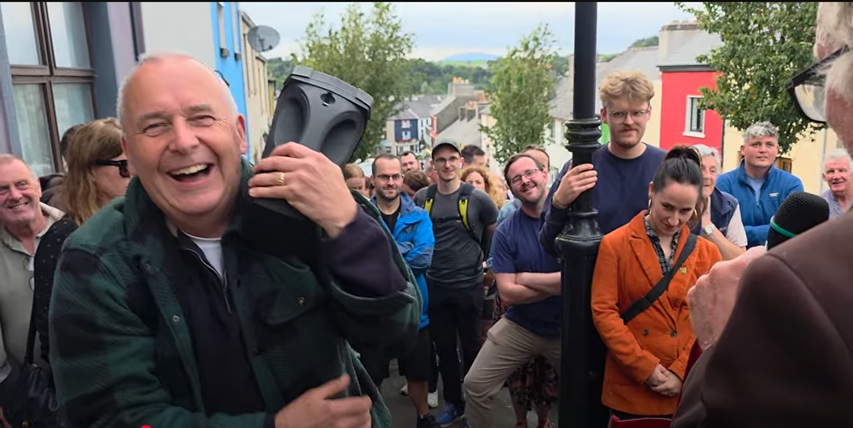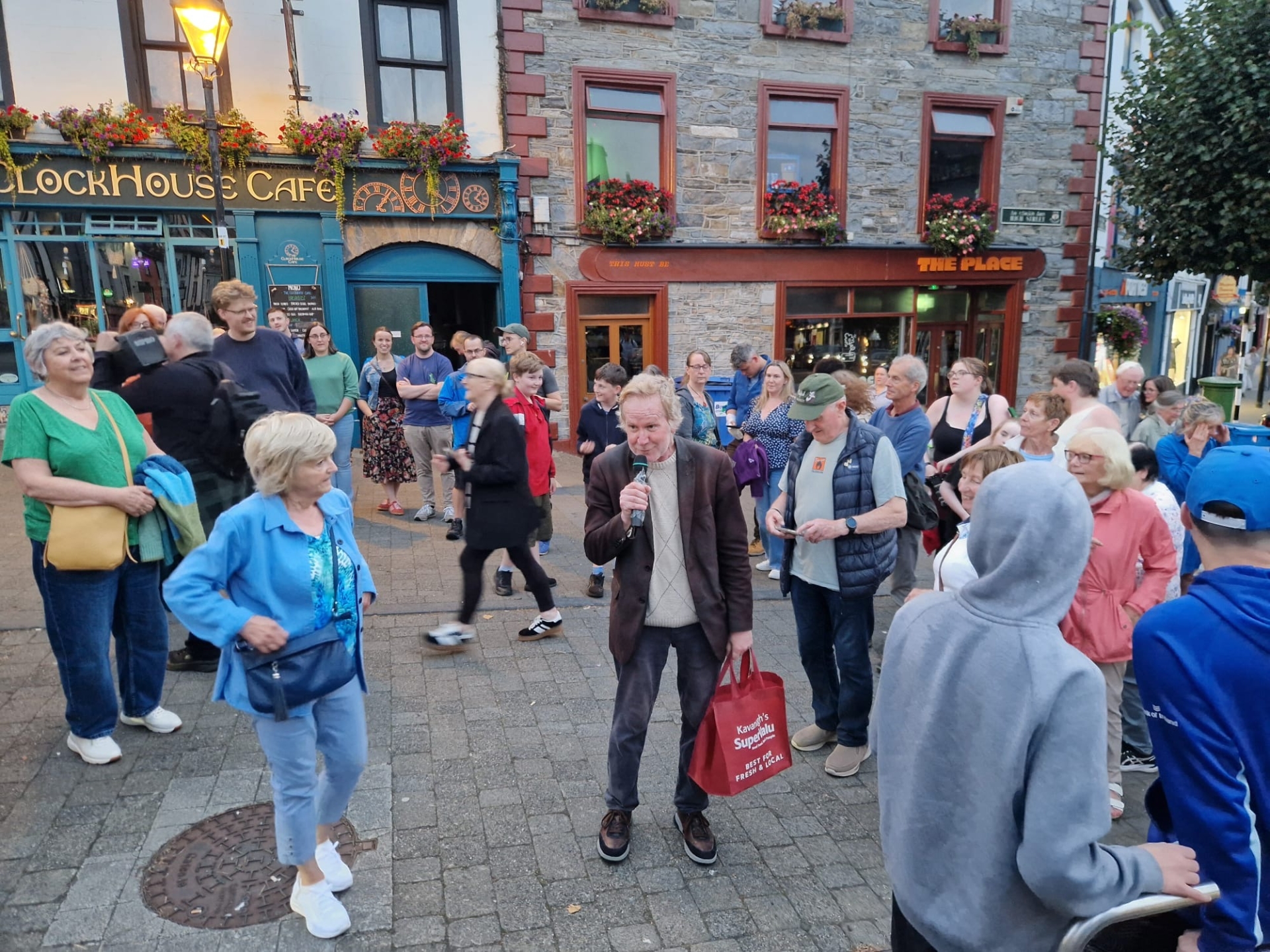
Eamonn Corcoran speaking to the crowd on Peter Street in Westport.
A hanging, the supernatural and ghosts all featured in the ‘Twilight Ghost Walk of Westport’ on Tuesday night.
A seventy strong crowd hungry for history rocked up to The Clock to hear Eamonn Corcoran delve into the horrible histories of Westport.
The walking tour was organised by the Westport Historical Society as part of Heritage Week.
He began the walk by telling the eager group that “I'll be talking about some of the darker aspects of the history of Westport.”
Hanging
One such dark aspect was the hanging of John Gibbons in 1798. His was the only judicial hanging in the history of the town.
Corcoran explains that Gibbons Sr was the agent for Westport House, owned by the Browne family. However, he was also moonlighting as the leader for the rebels in this part of the country.
READ MORE: Westport author writes book on founders of The Mayo News
John Gibbons Sr escaped to France but his son, John Gibbons Jr, was not so lucky.
The notorious High Sheriff Denis ‘Soap the Rope’ Browne, who happened to be the godfather of Gibbons Jr, tracked him down in Connemara.
He ensured that the hanging was brutal and Gibbons Jr “was left to hang for a time as a warning to people not to rebel.”
Poll na gCapall
Many people will be familiar with the entrance to Westport House on Church Lane and may have walked through it without realising the legend of the water horse.
Corcoran explains that legend has it that a water horse would rise up from the march near the gates. The horse would sample some of the marshy grass on the verges of the pool but if people approached, the horse would go back into the deep recesses of the water and become invisible again.
There was also a myth about Poll na gCapall that one day, the waters would rise from the marshy pool and would ultimately drown and destroy the town of Westport.
 Liamy McNally carrying a speaker on the ‘Twilight Ghost Walk of Westport’
Liamy McNally carrying a speaker on the ‘Twilight Ghost Walk of Westport’
Cattle Drives
The Newport Road was another stop of the ‘Twilight Ghost Walk of Westport’. Corcoran explained how in 1919 RIC inspector John Charles Milling was murdered when four shots rang through his living room window.
His death can be seen in the context of The War of Independence . However Corcoran notes that “two weeks before he was killed, he imprisoned two men who had taken part in a cattle drive.”
Cattle drives were common at the time and occurred in land disputes between land owners and tenant farmers. They involved the driving of the cattle of the people they were in dispute with onto the roads.
 The gathering by the Clock for the ‘Twilight Ghost Walk of Westport’
The gathering by the Clock for the ‘Twilight Ghost Walk of Westport’
Slavery funded building of Westport
“In the history of Westport, there is a slightly dark secret”, begins Corcoran.
He outlines that a lot of the money “that came for the building of Westport House, the dredging of the sea, the creation of an artificial lake, and the creation of the town came from slavery.”
This was because “before the building spree took place, one of the Brownes married a Catholic heiress from Galway, called Elizabeth Kelly. Her portrait hangs to this day in Westport House.”
READ MORE: Mystery of identification of Achill Famine drowning victims solved
The Penal Laws in Ireland were aimed at securing Protestant ascendancy at the time and discriminated against Catholics.
Corcoran comments that “the bizarre fact was that while Penal Laws made it difficult for Catholics to own land in Ireland, those same Catholics could emigrate to British colonies and face no discrimination whatsoever.”
Ending on a positive note, Corcoran says Howe Peter Browne, the 2nd Marquis of Sligo, of Westport House, “played a leading role in the abolition of slavery, because when it was being finally debated at the House of Lords in 1838 he stood up and said, ‘It doesn't matter what is decided at the end of this debate, I'm freeing all my slaves on August the first of this year.’ And the British government agreed to the same date with the final operation of slavery.”
It should also be noted that he submitted a claim for 286 slaves and was awarded £5,525 in the 1830s.
For those interested in learning more about Westport’s history, the Clew Bay Heritage Centre runs Free Historical Walking Tours of Westport every Wednesday at 11am from the Clock, right through to the end of September.
Subscribe or register today to discover more from DonegalLive.ie
Buy the e-paper of the Donegal Democrat, Donegal People's Press, Donegal Post and Inish Times here for instant access to Donegal's premier news titles.
Keep up with the latest news from Donegal with our daily newsletter featuring the most important stories of the day delivered to your inbox every evening at 5pm.